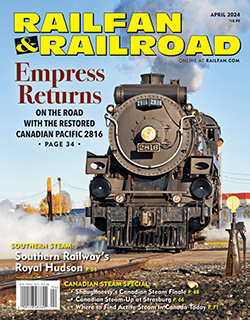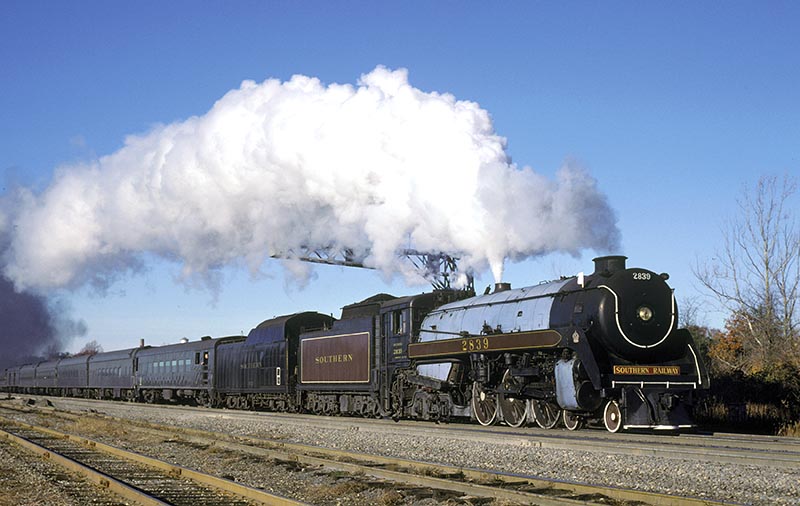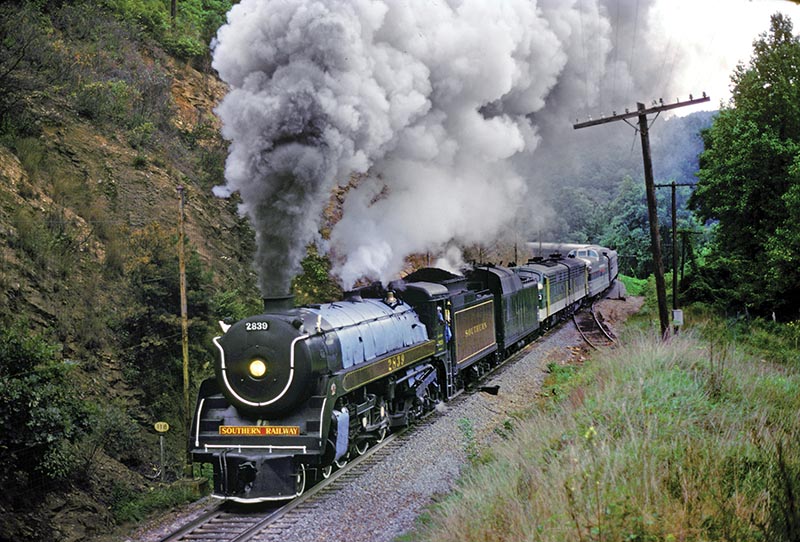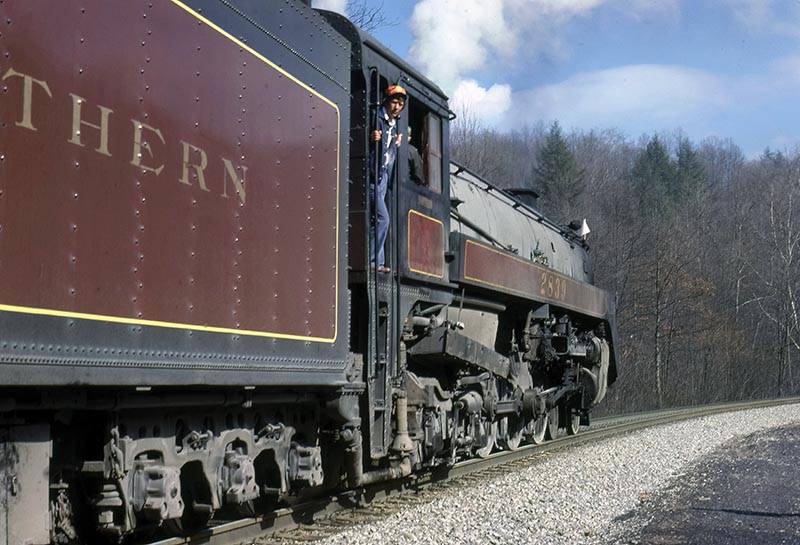 by Ron Flanary/photos as noted
by Ron Flanary/photos as noted
Eighty-seven years after it was built by Montreal Locomotive Works for Canadian Pacific Railway as one of 65 of the road’s famed H1 Hudsons, locomotive 2839 sits “stuffed and mounted” outside an automobile museum near Los Angeles. It’s a dignified retirement for a member of one of CP’s most famous classes of steam locomotive and if a locomotive could talk, it would most certainly have a remarkable story to share.
The steam era on CP came to an end in early 1960 and H1c 2839 was among the last active locomotives on the roster. After being in storage for three years, the locomotive was sold in March 1963 to the Government of Ontario for a potential transportation museum. Those plans later faltered and the locomotive was sold again to a group of steam fans in 1969 who formed the Royal Hudson Locomotive Company. The initial partners included Mike Eagleson, Ron Ziel, Peter Vander Veld, and Victor Hand, and they hoped to restore it to operating condition.
That plan never bore fruit, but in 1972, the enthusiasts leased it to the Atlantic Central Steam Company, a group that was single-mindedly determined to see 2839 operate again. The engine was towed from Canada to the U.S. and stored on the U.S. Steel-owned Northampton & Bath in Pennsylvania. The locomotive was literally sitting in an open field when Atlantic Central began its restoration. When compared to today’s steam restoration efforts, the job performed on 2839 over five years was downright primitive. The crew had no shelter, electrical power, or water, and certainly none of the specialized tools and machines one would consider essential for such a task. Armed with nothing more than ball-peen hammers, screwdrivers, pipe wrenches, crowbars, block and tackle rigs, a “come along” (a power puller using a hand-operated winch with a ratchet), plus human muscle and determination, a fiercely dedicated group began disassembly of the 4-6-4.

ABOVE: The safety valve has lifted as 2839 spends its last day running on Southern Railway trackage. The “Royal Farewell” one-way trip to Alexandria, Va., is about 50 miles into its run this day. The white trim on the handrails and bottom of the pilot was added in the 1980s to “doll up” the engine. —Robert F. Graham, Jr. photo
While externally 2839 appeared to be in rough shape, internally the locomotive was sound, due in large part to CP having completed a heavy overhaul late in the steam era. The running gear was in good condition, so most of the work involved removing the front of the smokebox (again, only with hand tools) and tackling the boiler. The boiler jacket was removed, as well as the lagging. All flues were checked and welded as needed, and superheater tubes were removed and flushed. Stay bolts were also replaced as needed. It was understood the boiler’s integrity was the critical component if the engine was to run again, so the pressure vessel got most of the attention and work.
Every major component was disassembled as much as possible, repaired (if needed), and thoroughly lubricated before putting everything back together. The tender was uncoupled from the engine. The volunteers scaled rust from the interior and removed the residue in buckets. The same was done for all major components, including the trailing truck booster, stoker, feedwater heater, lubricators, injector, and power reverse. Cab gauges were replaced as needed or recalibrated for accuracy.

ABOVE: On September 27, 1980, 2839 required the help of two Southern FP7s to get up the Blue Ridge Loops en route to Asheville, N.C. The worst was still ahead for the train as the trio blasted out of Old Fort, N.C. —David W. Beach photo
Miraculously, this happy group of volunteers continued at this task for five years. Lesser individuals would have thrown down their hand tools and walked away. Along the way, Conrail came into existence in 1976 and served notice that hosting steam locomotive excursions on its system was a non-starter for the new railroad. Undaunted, the group continued to work on 2839. The completed boiler passed a hydrostatic test, and on July 6, 1975, a wisp of coal smoke rose above the engine’s streamlined stack. When the boiler pressure hit 275 p.s.i., the first safety valve lifted. The 2839 was back in action!
The only thing left was to paint the locomotive into its iconic CP Tuscan red. Unfortunately, Royal Hudson 2839 was all dressed up with nowhere to go. The link with the rest of the railroad world was Conrail, so options for public excursions and operations were near zero…



